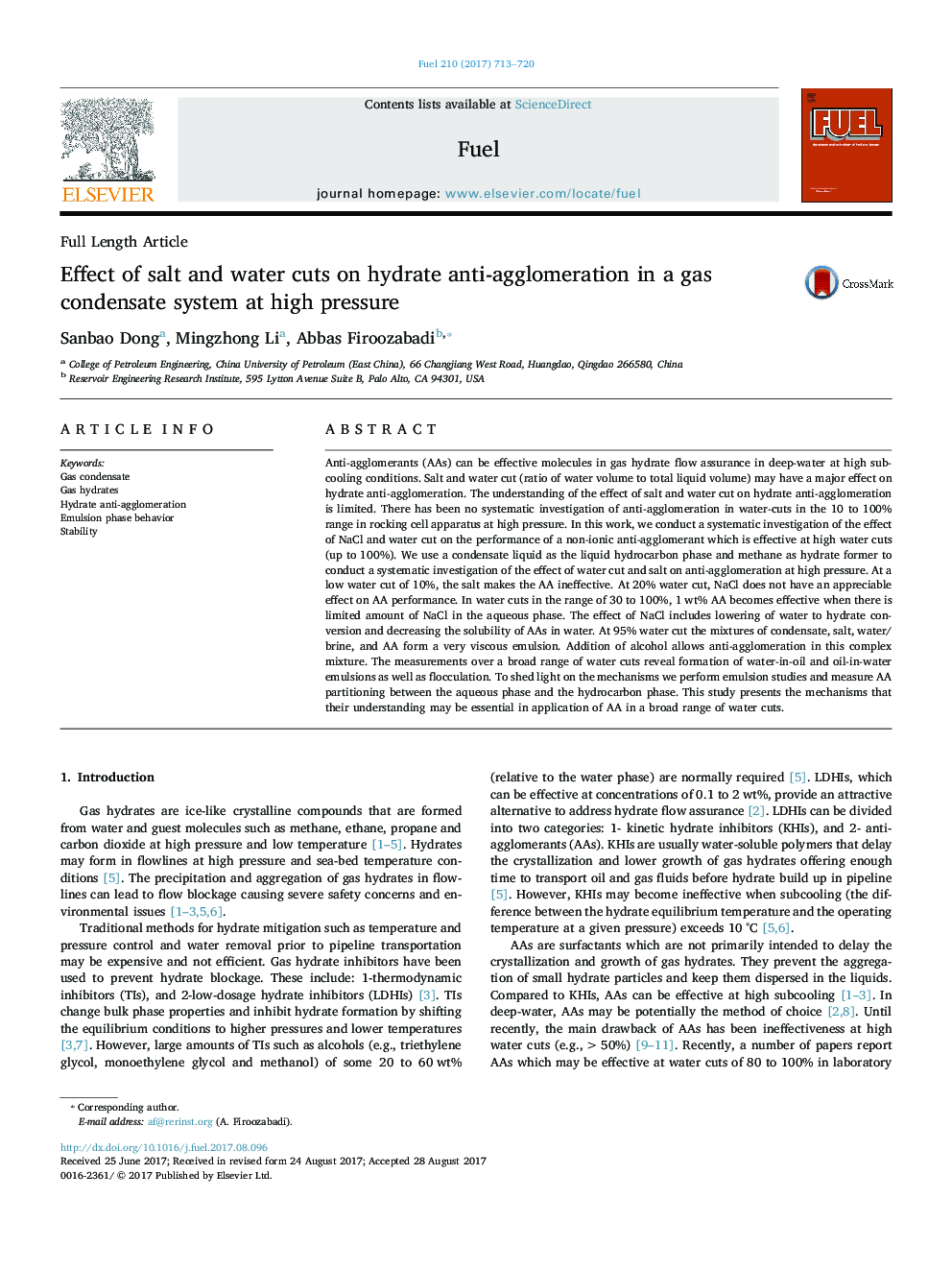| کد مقاله | کد نشریه | سال انتشار | مقاله انگلیسی | نسخه تمام متن |
|---|---|---|---|---|
| 4768367 | 1424954 | 2017 | 8 صفحه PDF | دانلود رایگان |
عنوان انگلیسی مقاله ISI
Effect of salt and water cuts on hydrate anti-agglomeration in a gas condensate system at high pressure
ترجمه فارسی عنوان
اثر کاهش نمک و آب بر روی ضد انهدام هیدرات در یک سیستم گاز مایع در فشار بالا
دانلود مقاله + سفارش ترجمه
دانلود مقاله ISI انگلیسی
رایگان برای ایرانیان
کلمات کلیدی
گاز مایع، هیدراتهای گاز، ضد انعقاد هیدراته، رفتار فاز امولسیون، ثبات،
موضوعات مرتبط
مهندسی و علوم پایه
مهندسی شیمی
مهندسی شیمی (عمومی)
چکیده انگلیسی
Anti-agglomerants (AAs) can be effective molecules in gas hydrate flow assurance in deep-water at high subcooling conditions. Salt and water cut (ratio of water volume to total liquid volume) may have a major effect on hydrate anti-agglomeration. The understanding of the effect of salt and water cut on hydrate anti-agglomeration is limited. There has been no systematic investigation of anti-agglomeration in water-cuts in the 10 to 100% range in rocking cell apparatus at high pressure. In this work, we conduct a systematic investigation of the effect of NaCl and water cut on the performance of a non-ionic anti-agglomerant which is effective at high water cuts (up to 100%). We use a condensate liquid as the liquid hydrocarbon phase and methane as hydrate former to conduct a systematic investigation of the effect of water cut and salt on anti-agglomeration at high pressure. At a low water cut of 10%, the salt makes the AA ineffective. At 20% water cut, NaCl does not have an appreciable effect on AA performance. In water cuts in the range of 30 to 100%, 1Â wt% AA becomes effective when there is limited amount of NaCl in the aqueous phase. The effect of NaCl includes lowering of water to hydrate conversion and decreasing the solubility of AAs in water. At 95% water cut the mixtures of condensate, salt, water/brine, and AA form a very viscous emulsion. Addition of alcohol allows anti-agglomeration in this complex mixture. The measurements over a broad range of water cuts reveal formation of water-in-oil and oil-in-water emulsions as well as flocculation. To shed light on the mechanisms we perform emulsion studies and measure AA partitioning between the aqueous phase and the hydrocarbon phase. This study presents the mechanisms that their understanding may be essential in application of AA in a broad range of water cuts.
ناشر
Database: Elsevier - ScienceDirect (ساینس دایرکت)
Journal: Fuel - Volume 210, 15 December 2017, Pages 713-720
Journal: Fuel - Volume 210, 15 December 2017, Pages 713-720
نویسندگان
Sanbao Dong, Mingzhong Li, Abbas Firoozabadi,
